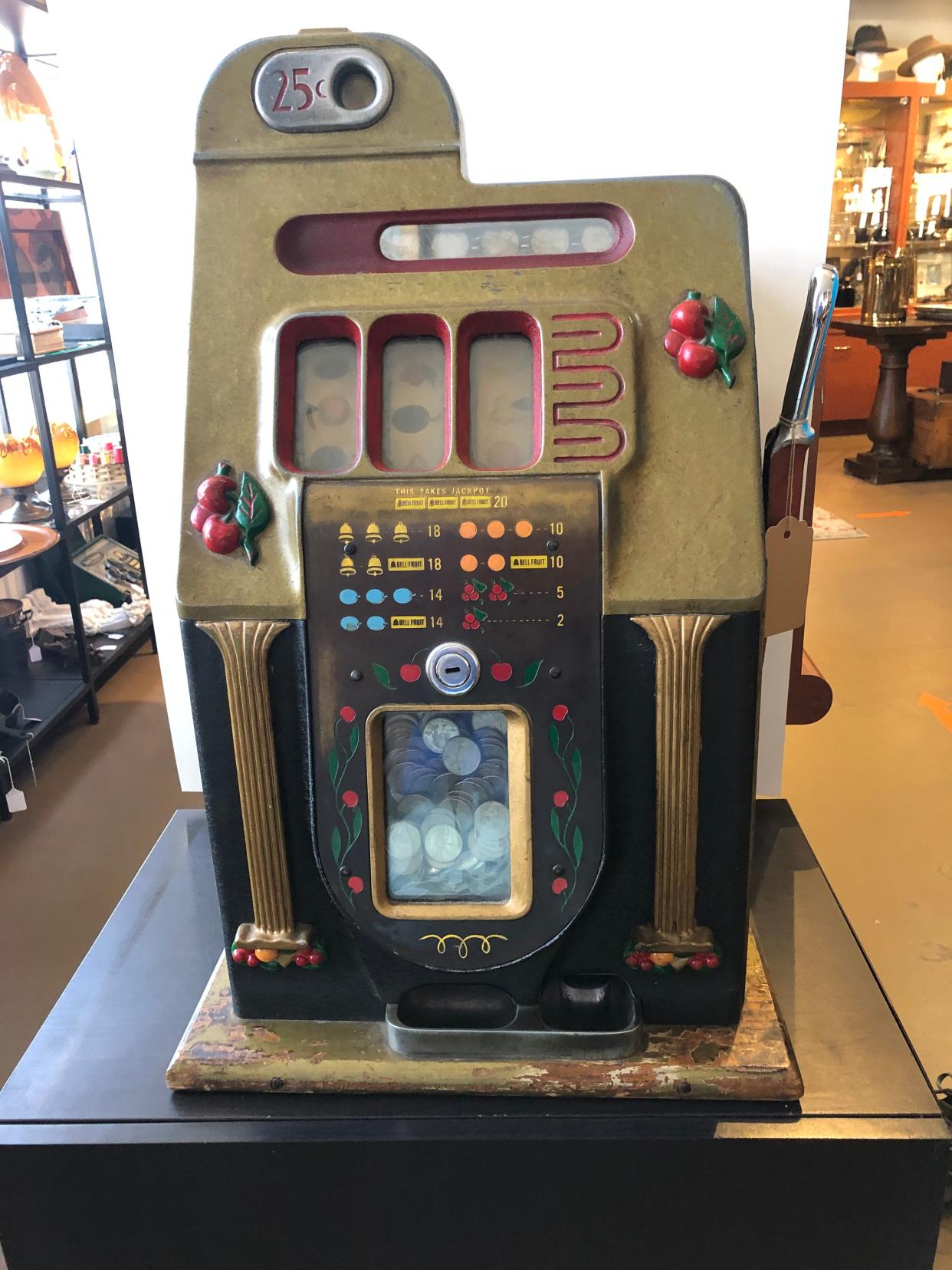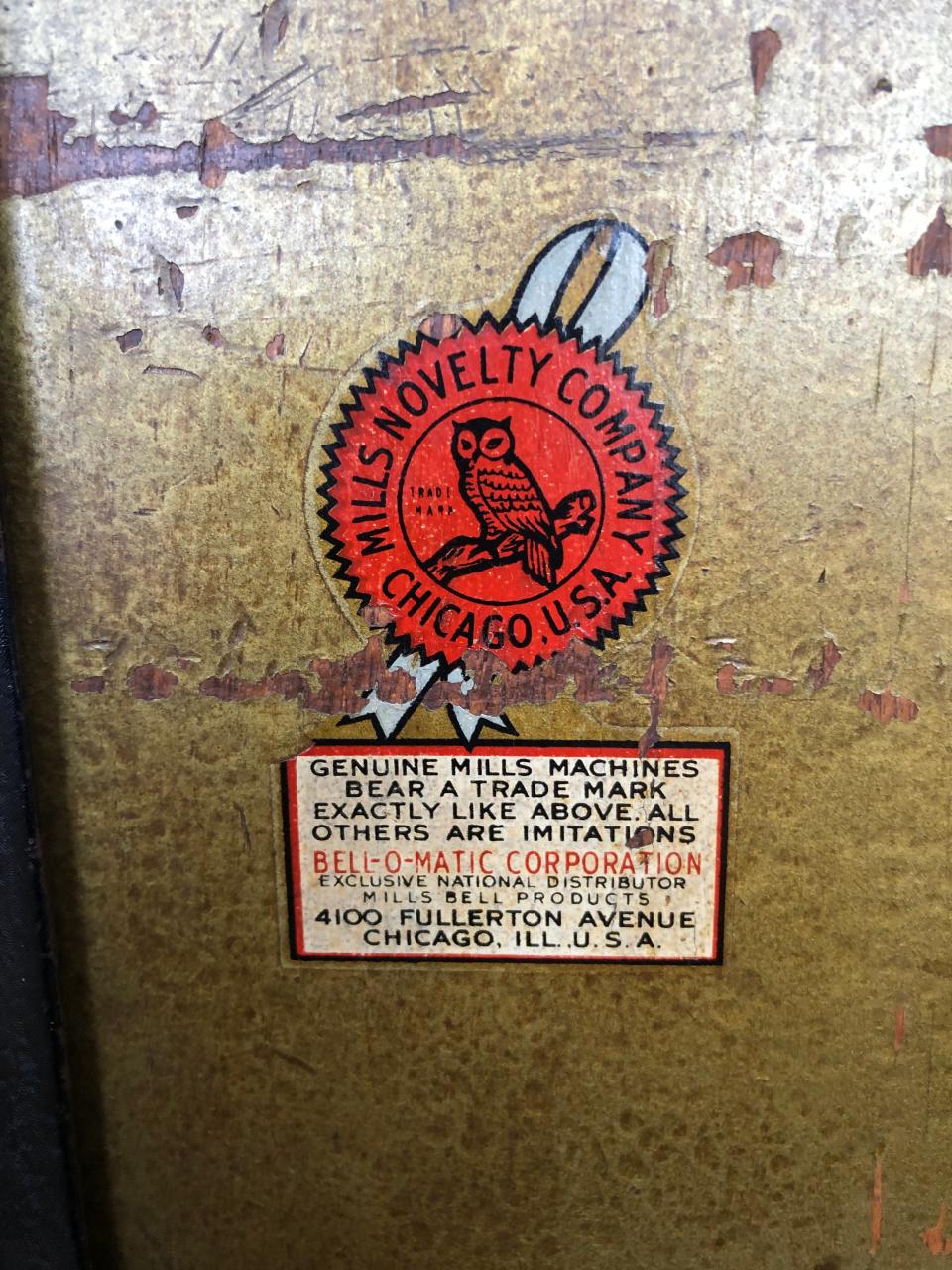Antiques: A game of chance, then and now

Like to gamble? So do a lot of other people. Nearly 39 million people visited Las Vegas last year, not all of them for the golf and sunshine. Another 27 million or so stopped by Atlantic City, and then there are all the tribal casinos and other places anxious to separate you from your money.
Among the most reliable means of getting rid of your dough is the slot machine, of which there are nearly 200,000 in Las Vegas alone. Proponents of slot machines will tell you that they pay out more than any other gambling medium, and that may well be true. Still, if you want to try your luck at home with your very own one-armed bandit, you can never lose. Here's some background.
First of all, it should be noted that private possession of slot machines in California is strictly regulated. You can own one, but it must be at least 25 years old and not used as a money-making device. In other words, it must only be used for personal or recreational purposes and cannot pay out money to third parties. In fact, the Golden State only allows gambling under a very few specific circumstances, the details of which we won't wade through here. Suffice it to say that private slot machines can be fun, but they need to stay private.
As for history, the first slot machine came about during the 1890s, pioneered by a couple of New Yorkers looking to automate the game of poker. Early machines required a nickel to play and quickly became popular in the bars and gin joints throughout the Northeast. Insofar there was no mechanism that allowed for payouts, winnings were determined by the host establishment and usually consisted of drinks or meals. A few years later, a San Franciscan named Charles Fay introduced the Liberty Bell machine with a simplified mechanism, but one that included a means of generating automatic payouts. Not surprisingly, that machine was a runaway success, generating variants and knock-offs that became ubiquitous throughout the Southwest and formed the basis of today's casino business.

In 1907, Herbert Mills entered the market with his own version of the Liberty Bell, and his firm quickly became a leader in the field. At first, his spinning reels utilize the same symbols as Fay's — mostly card suits such as hearts and diamonds — but later moved to such symbols as cherries and lemons to promote his gum-vending side hustle. Other makers followed suit and before long those elements emerged as the industry standard. The decades passed with further innovations, including the 1967 introduction of the first electro-mechanical slot machine by Bally, and nine years later, the first video slot machine by the Fortune Coin Company.
Nonetheless, the old Mills machines proved to be remarkably durable and many remained in use for a half-century or more.
Today, of course, the digital wave has crashed over the slot machine industry, now characterized by gigantic screens and virtual payouts. The clatter of coins falling into a drop bucket had largely disappeared, and it takes a lot of electricity to run these new so-called electronic gaming machines (EGMs). Happily, such monoliths are anathema to most collectors who favor the smaller purely mechanical machines. And that's just as well, because the flashiest EGMS almost always fall inside the 25-year age limit, thus making them illegal to own in California.
So, if you're in the market for an old-school machine, galleries like ours often have a few, and there are specialists in slot machine repair that can keep them running. If Bugsy Malone was still around, he would surely approve.
Mike Rivkin and his wife, Linda, are longtime residents of Rancho Mirage. For many years, he was an award-winning catalogue publisher and has authored seven books, along with countless articles. Now, he's the owner of Antique Galleries of Palm Springs. His antiques column appears Sundays in The Desert Sun. Want to send Mike a question about antiques? Drop him a line at info@silverfishpress.com
This article originally appeared on Palm Springs Desert Sun: Antiques: A game of chance, then and now

